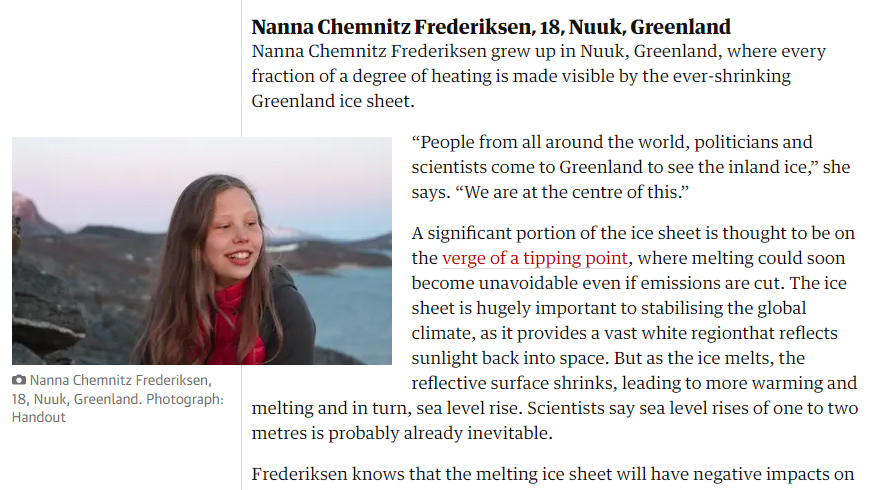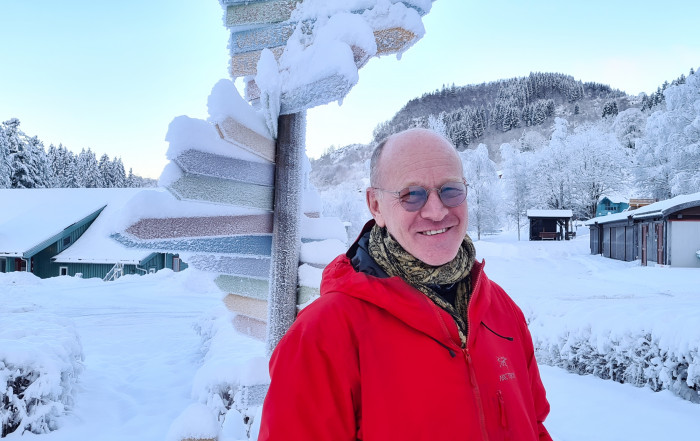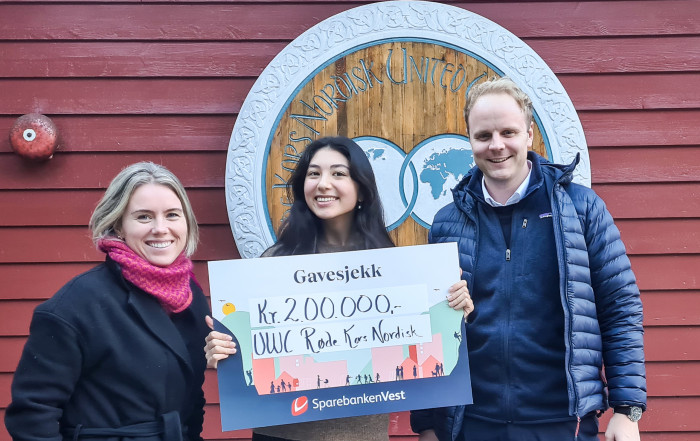“People from all around the world, politicians and scientists come to Greenland to see the inland ice,” she says. “We are at the centre of this.”
A significant portion of the ice sheet is thought to be on the verge of a tipping point, where melting could soon become unavoidable even if emissions are cut. The ice sheet is hugely important to stabilizing the global climate, as it provides a vast white region that reflects sunlight back into space. But as the ice melts, the reflective surface shrinks, leading to more warming and melting and in turn, sea level rise. Scientists say sea level rises of one to two metres is probably already inevitable.
Frederiksen knows that the melting ice sheet will have negative impacts on communities across Greenland, especially in northern settlements such as Qaanaaq where permafrost melting is destabilizing homes and roads and impacting how fishers and hunters operate.
But her real concern lies on the impact it will have globally. “I am not so scared of what the effects of the melting of ice in Greenland will be,” Frederiksen says, “It scares me what effect it can have for the rest of the world.”
Latest News
Message from the Rektor, December 2022
Dear RCN Community, RCN captures you! So it was an easy decision to accept the offer from the board to extend my contract beyond the initial, interim year. It is hard to know exactly [...]
Nobel Peace Prize Ceremony 2022
The world turns its attention every year to the Nobel Peace Prize in Oslo and, given UWC’s mission for peace and a sustainable future, we are honoured that our students are invited to [...]
Thank you to Sparebanken Vest!
We are so grateful that Sparebanken Vest, through Ildsjelfondet, continues to support our work towards creating equal opportunities for children and youths in Vestland county! Community interaction and service are at the heart [...]




